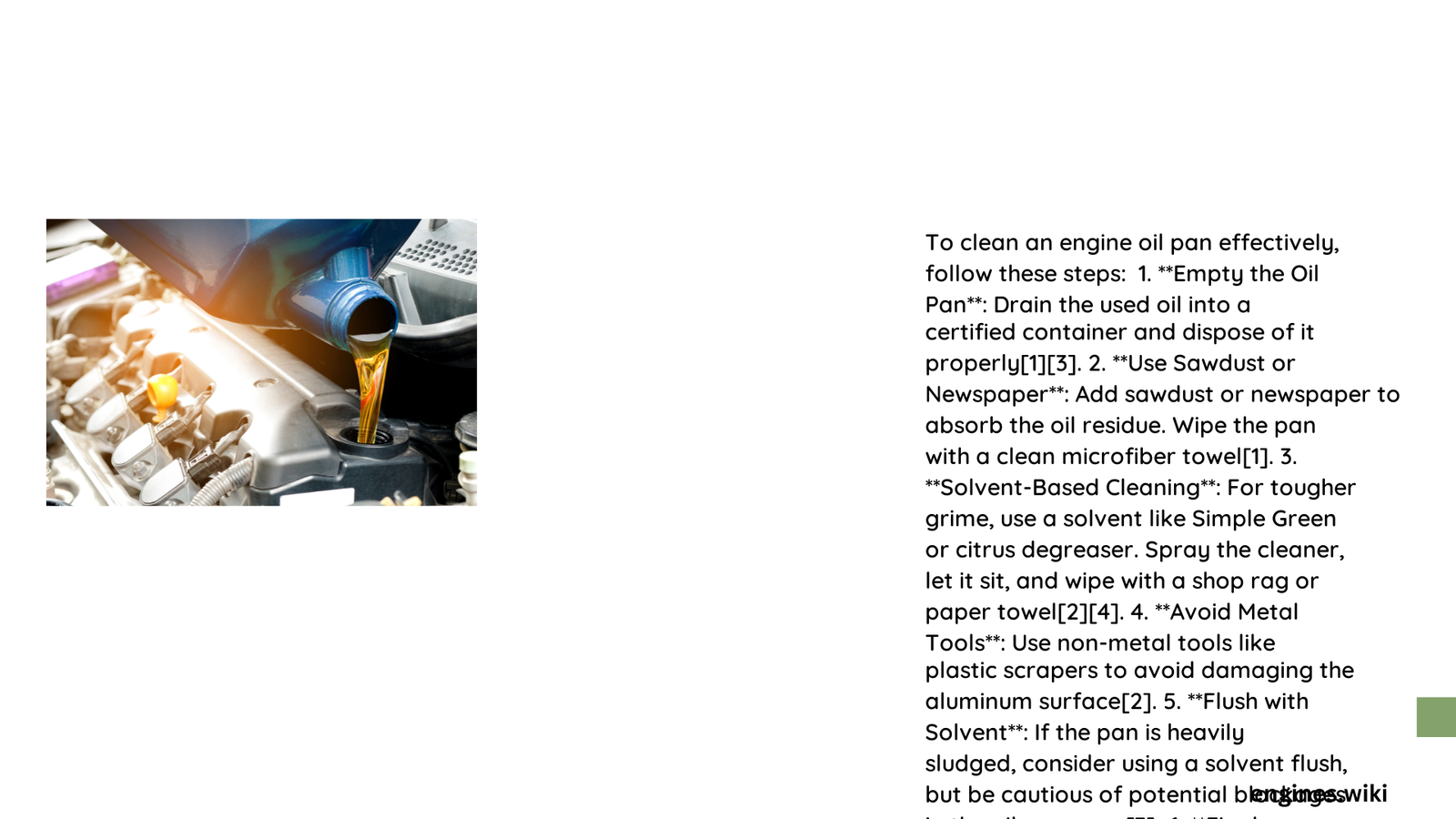Cleaning an engine oil pan is a critical maintenance task that prevents sludge buildup, ensures optimal engine performance, and extends the lifespan of your vehicle’s critical components. Accumulated oil, debris, and contaminants can compromise engine efficiency, leading to potential mechanical failures if not addressed systematically. This comprehensive guide provides professional-grade techniques and methodologies for thorough engine oil pan cleaning, addressing various scenarios and challenges mechanics and automotive enthusiasts encounter.
Why Clean Your Engine Oil Pan?
What Happens When Oil Pans Accumulate Grime?
- Performance Reduction: Sludge buildup restricts oil flow
- Potential Engine Damage: Increased friction and heat generation
- Corrosion Risk: Trapped moisture accelerates metal degradation
Preparation for Oil Pan Cleaning

What Tools Do You Need?
| Tool | Purpose | Estimated Cost |
|---|---|---|
| Microfiber Towels | Wiping and drying | $5-$10 |
| Nylon Brushes | Gentle scrubbing | $3-$7 |
| Plastic Scrapers | Removing crusty residue | $2-$5 |
| Safety Gloves | Personal protection | $5-$15 |
Cleaning Techniques for Different Oil Pan Conditions
How to Remove Light Oil Residue?
- Sawdust Method
- Drain used oil completely
- Spread sawdust across oil pan interior
- Absorb remaining oil residue
- Rinse with water
- Wipe with microfiber towel
How to Handle Heavy Grime Buildup?
- Aircraft Paint Stripper Approach
- Select aerosol-based stripper
- Spray evenly inside oil pan
- Allow 5-10 minutes dwell time
- Scrub with soft brush
-
Rinse thoroughly
-
Citrus Degreaser Technique
- Use full-strength citrus degreaser
- Soak oil pan for 10-30 minutes
- Scrape with plastic tool
- Rinse with water
- Follow up with WD-40 if needed
Advanced Cleaning Considerations
What About Stubborn Sludge?
- Use progressively aggressive cleaning methods
- Start with mild degreasers
- Escalate to chemical strippers if necessary
- Always protect surrounding engine components
How to Prevent Future Buildup?
- Regular oil changes
- Use high-quality engine oil
- Implement periodic cleaning schedule
- Monitor oil condition during maintenance
Safety and Environmental Precautions
What Disposal Methods Should You Follow?
- Collect used cleaning agents in sealed containers
- Dispose of at certified automotive recycling centers
- Avoid environmental contamination
- Use protective equipment during cleaning process
Pro Tips for Optimal Cleaning
- Temperature Considerations: Room temperature works best
- Avoid Abrasive Materials: Prevent surface damage
- Inspect for Damage: Check for rust or pitting during cleaning
- Dry Completely: Prevent moisture-related corrosion
Recommended Products
- Degreasers
- Driven Speed Clean
- Citrus-based industrial degreasers
-
Specialized automotive cleaning solutions
-
Protective Equipment
- Chemical-resistant gloves
- Safety glasses
- Disposable work apron
Common Mistakes to Avoid
- Using excessive force during scrubbing
- Neglecting proper rinsing
- Skipping thorough drying process
- Ignoring manufacturer-specific recommendations
Final Recommendations
Consistent maintenance and careful cleaning will significantly enhance your engine’s performance and longevity. Always prioritize systematic approach and use appropriate tools and techniques.
